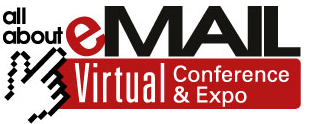Deliverability session at Connections 2016
If you’re at Connections 2016 stop by our session at 3:00 in the Sidney Marcus Auditorium. Bring your pressing deliverability questions.
If you’re at Connections 2016 stop by our session at 3:00 in the Sidney Marcus Auditorium. Bring your pressing deliverability questions.
 Ken Magill will be interviewing me on the Truths and Myths of Email Deliverability, November 12 at the 2015 All About eMail Virtual Conference & Expo. Ken has a bunch of questions he wants to ask me, but he’s also expecting to take a lot of questions from the audience as well.
Ken Magill will be interviewing me on the Truths and Myths of Email Deliverability, November 12 at the 2015 All About eMail Virtual Conference & Expo. Ken has a bunch of questions he wants to ask me, but he’s also expecting to take a lot of questions from the audience as well.
Speaking of myths, there has been discussion lately about recycled spamtraps. Apparently, there are people who believe (believed?) that every ISP uses recycled spamtraps. When Hotmail and Gmail said recently they didn’t use recycled traps people got very upset that they believed something that was not true.
It’s a mess. There is so much about email that is like a version of telephone. One person says “hotmail uses recycled spamtraps” someone else repeats “big ISPs use recycled spamtraps” then then third person says “all ISPs use recycled spamtraps.” People try and correct this type of misinformation all the time but sometimes it’s hard to clarify.
So show up to our session and let Ken lob questions at me, lob some of your own and we can see what myths we can clear up.

Tomorrow I head off to New Orleans to the EEC conference. It’s my first one and I’m really looking forward to meeting some of the people I only know online.
I’ll be speaking on two panels on Friday:
All You Ever Wanted to Know about Deliverability (But Were Afraid to Ask) at 10:50. This is your chance to ask those questions of myself and other experts in the field. I always enjoy Q&A panels and actually hearing from folks what their big deliverability questions are. (and remember, if you have a question, you can always send one to me for Ask Laura)
and the closing Keynote panel
ISP Postmasters & Blacklist Operators: Defending Consumer Inboxes at 1:10. I’m on a panel with various ISP postmasters, blacklist operators and we’ll be talking about what it’s like dealing with the deluge of mail. For instance, there is a huge outbreak of bot-spam at the moment, and a lot of the filters are struggling to keep up. In fact, I’m a last minute replacement for one filter company as they are in all-hands-on-deck firefighting mode to keep their customers safe.
Hope to see you there!
EEC16 was my first Email Experience conference. I was very impressed. Dennis, Len, and Ryan put together a great program. I made it to two of the keynotes and both took me out of an email focused place to look at the bigger picture.![]()
Patrick Scissons discussed his experiences creating marketing and advertising campaigns for good and to share messages. Some of the campaigns were ones I’d seen as a consumer, or on the news. One of the campaigns he talked about specifically was for the group Moms Demand Action, looking at sensible gun control in the US. The images and symbology used in those campaigns were striking and very effective.
Kelly McEvers talked about her experiences as a correspondent in the middle east during the Arab Spring. She is an engaging speaker, as one who does radio should be. Her overall message and theme was that sometimes events are such that you need to throw the list away and go with it. As someone who lives by “the list” and tries to make sure I’m prepared for every eventuality I found that a very useful message. Particularly when throwing away “the list” turned into some massively successful stories.
In terms of sessions, I found the email content session fascinating. I blogged about content in email last week and did some live tweeting, too. What really hit me after that session was that good marketing drives deliverability. Everything that Carey Kegel was talking about in terms of better marketing, sounded like things I recommend to clients to drive deliverability.
Back in 2012 I was writing posts about how delivery and marketing were somewhat at odds with each other. The premise was that marketing was about creating mindshare, and repeating a message so often a recipient couldn’t forget it. In email, repetition can cause recipient fatigue and drive delivery problems. But what I’m hearing now, from the leading minds of email marketers, is that email marketing works better if you send relevant and useful information to consumers. Recipients are key and you can’t just keep hammering them, you have to provide them with some value.
It seems marketing has finally come around to the delivery point of view.